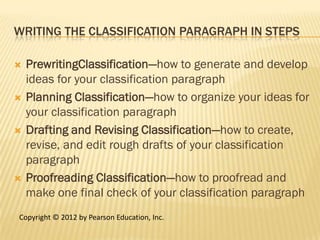The document discusses the concept of classification and provides instructions for writing a classification paragraph. It explains that classification involves dividing a topic into categories based on a clear basis or principle. The document then outlines the steps for writing a classification paragraph, including determining a topic and basis, developing three categories, outlining with details, drafting and revising the paragraph, and proofreading. Examples are provided to illustrate key points around choosing a basis and categories.














